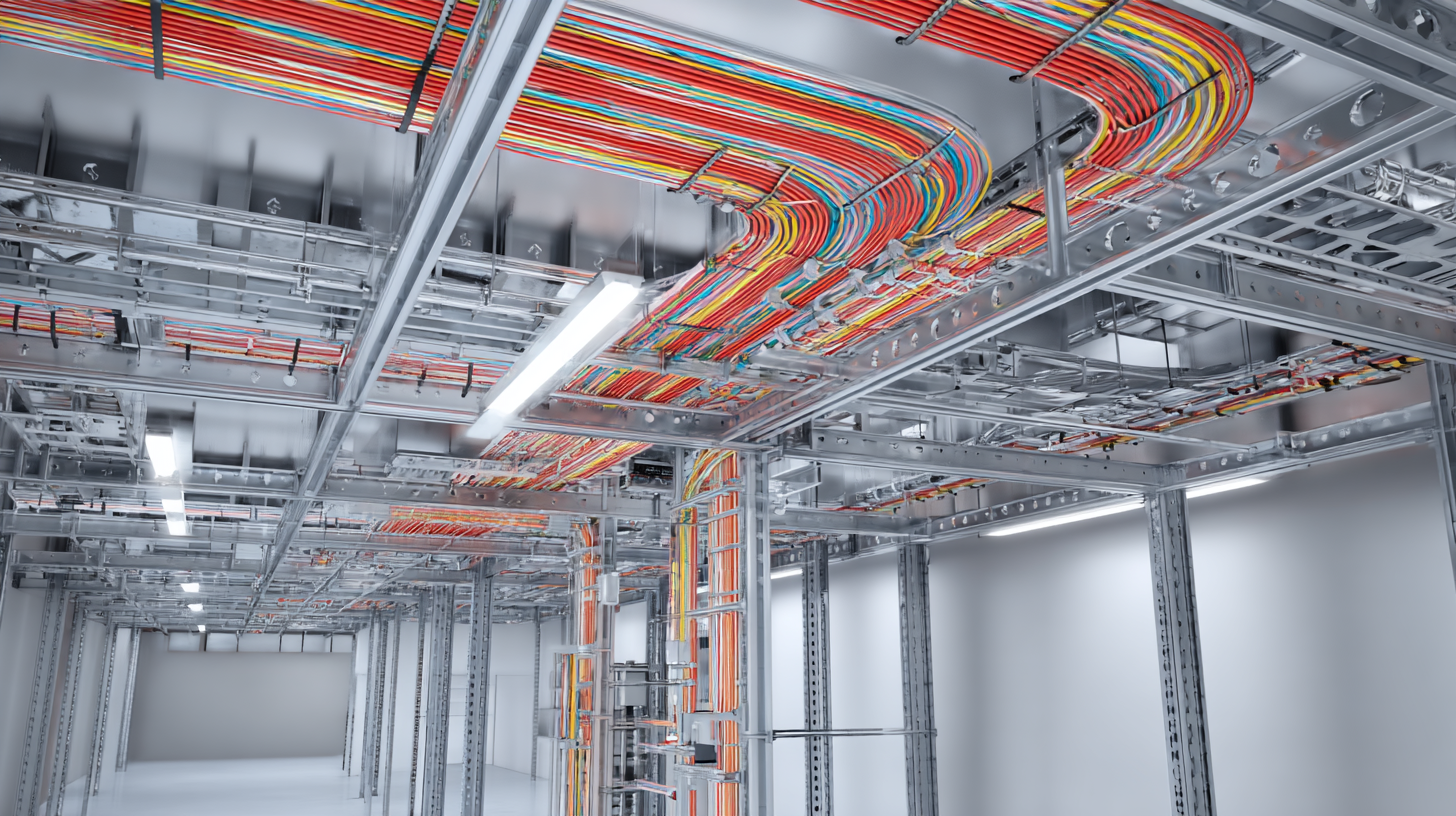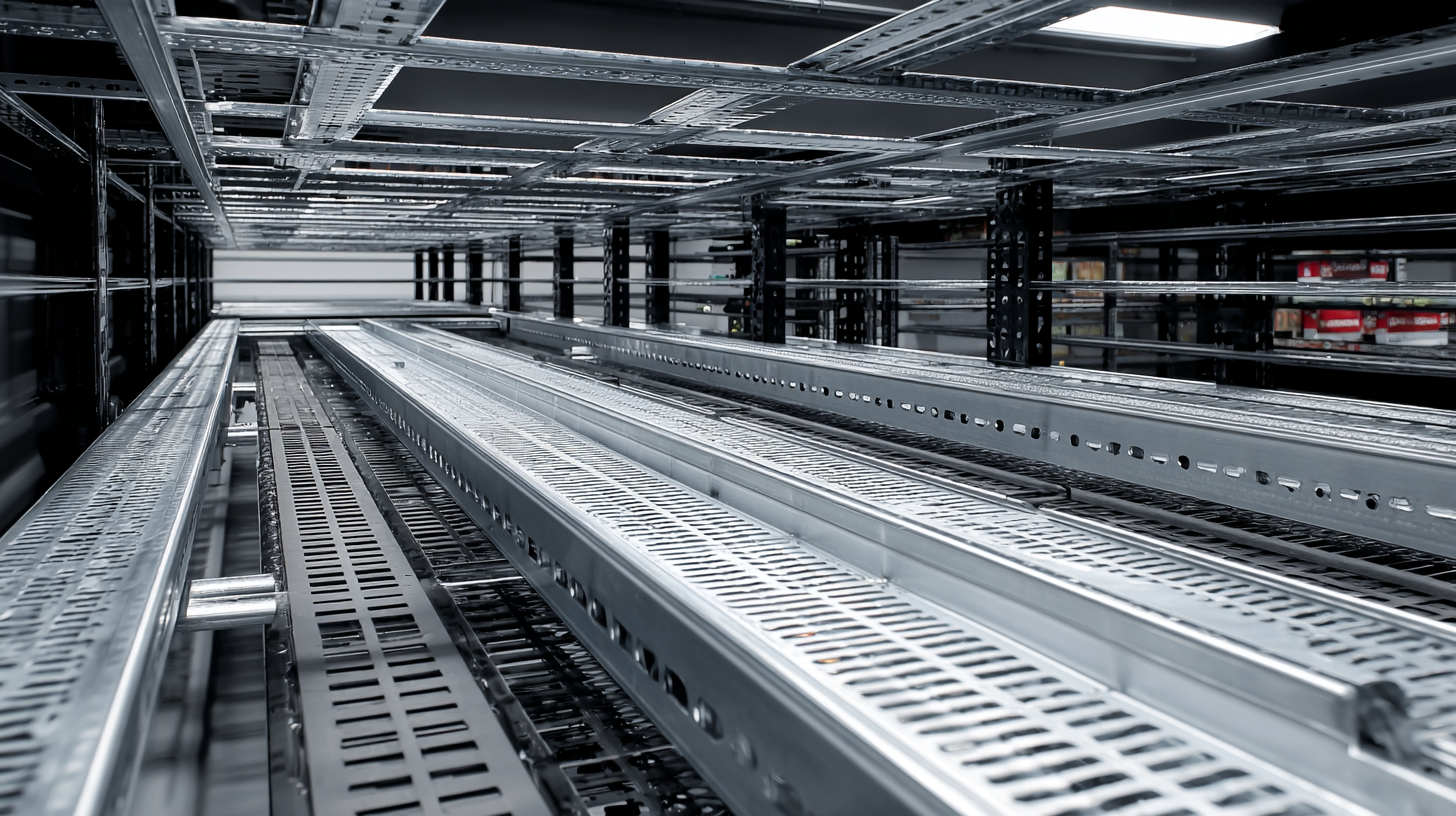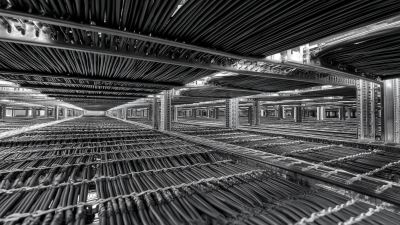Blog
Understanding the Benefits of Stainless Steel Cable Tray in Modern Electrical Installations
In the realm of modern electrical installations, the choice of materials significantly influences both safety and efficiency. Stainless steel cable trays have emerged as a preferred solution due to their impressive durability and resistance to corrosion, making them ideal for a variety of environments, including industrial and outdoor settings. According to a report by MarketsandMarkets, the global cable tray market is projected to reach $7.2 billion by 2026, with stainless steel cable trays witnessing a substantial surge in demand due to their superior performance and sustainability attributes. With the capability to withstand harsh conditions and provide optimal support for electrical wiring systems, these trays not only enhance the longevity of installations but also reduce maintenance costs over time. Given these benefits, understanding the advantages of stainless steel cable trays becomes essential for any modern electrical installation strategy.

How to Choose the Right Stainless Steel Cable Tray for Your Electrical Needs
When selecting the right stainless steel cable tray for your electrical needs, it is essential to consider several key factors. First, evaluate the environment where the tray will be installed. Environments that are prone to moisture, chemicals, or extreme temperatures require durable materials, and stainless steel is an excellent choice due to its corrosion resistance and strength. Additionally, consider the load capacity and size of the tray, ensuring it can accommodate the volume of cables while allowing for future expansion.
Another critical aspect is the type of installation. Different tray designs, such as ladder, perforated, or solid-bottom trays, serve various functions. Ladder trays are ideal for heavy cables and provide excellent airflow, while perforated trays suit lighter installations and allow for easy access. It's also important to check compatibility with your existing electrical infrastructure and spacing to ensure seamless integration. By thoughtfully weighing these factors, you can choose a stainless steel cable tray that meets both safety standards and operational efficiency for your electrical installations.
How to Install Stainless Steel Cable Tray for Optimal Performance and Safety
The installation of stainless steel cable trays is a key component in modern electrical setups, providing both optimal performance and safety. When installing these trays, it is essential to consider factors such as the environment and load requirements. Stainless steel is highly resistant to corrosion, making it a prime choice for installations in areas prone to moisture or chemical exposure, similar to the demanding conditions faced by vessels like the recently launched stainless steel chemical tanker.
To ensure a successful installation, first assess the layout of the cable tray system, ensuring there is adequate spacing and support for the trays to prevent sagging or structural issues. Use appropriate fasteners and accessories made from compatible materials to maintain the integrity of the installation. Additionally, plan for proper grounding and bonding to enhance safety and minimize electromagnetic interference. By following these guidelines, electricians can leverage the durability and efficiency of stainless steel cable trays, ensuring a long-lasting and safe installation that meets modern electrical demands.
How to Maintain and Care for Stainless Steel Cable Trays in Various Environments
Maintaining stainless steel cable trays is essential to ensure their longevity and optimal performance in electrical installations. Regular cleaning is the first step; it involves removing dust, dirt, and any debris that may accumulate over time. Depending on the environment, how often this should be done may vary. In industrial settings where exposure to chemicals or harsh elements is common, more frequent cleaning may be required. Using a mild detergent and warm water, along with non-abrasive cloths, will help prevent scratches while ensuring the surface remains free of contaminants.
In addition to regular cleaning, it's crucial to inspect the stainless steel cable trays periodically for signs of corrosion or damage. Areas that are exposed to moisture or corrosive substances should be monitored closely. Applying a protective coating or sealant can also add an extra layer of defense against environmental factors. Furthermore, ensuring proper drainage and reducing contact with contaminants, such as oils or solvents, will significantly extend the life of the trays, maintaining their aesthetic and functional qualities. By following these maintenance practices, the effectiveness and durability of stainless steel cable trays in various environments can be assured.

How to Maximize Space Efficiency with Stainless Steel Cable Tray Design
Stainless steel cable trays are becoming a preferred choice in modern electrical installations due to their durability, resistance to corrosion, and aesthetic appeal. When it comes to maximizing space efficiency with stainless steel cable tray design, careful planning and strategic implementation are key. By taking advantage of vertical and horizontal space, installations can remain organized while accommodating a larger number of cables without cluttering the area.
**Tips:** Consider using modular cable tray systems that are easy to customize. These systems can be adjusted to fit various ceiling heights and wall layouts, ensuring that every inch of available space is utilized effectively. Additionally, opting for a combination of different tray sizes can help in managing different types of cables more efficiently, preventing unnecessary bulk in high-density areas.
Another effective approach is to integrate cable management accessories, such as dividers and covers, which enable better separation of cables. This not only improves aesthetics but also aids in future maintenance and troubleshooting. Thoughtful design in the arrangement of stainless steel trays can lead to quicker installations and simpler modifications down the line, ultimately enhancing overall project efficiency.

How to Ensure Compliance with Electrical Codes Using Stainless Steel Cable Trays
In modern electrical installations, ensuring compliance with electrical codes is paramount, and stainless steel cable trays play a critical role in this aspect. These trays not only provide support for electrical cabling but also contribute to enhanced safety and reliability in various environments. According to a report by the National Electrical Manufacturers Association (NEMA), the use of stainless steel cable trays can significantly reduce the risk of electrical hazards, as they are resistant to corrosion, thus prolonging the lifespan of the installation.
To ensure compliance with electrical codes, it is essential to choose stainless steel cable trays that meet specific standards. The American National Standards Institute (ANSI) provides guidelines that specify the material properties required for cable trays, including load-bearing capacity and resistance to environmental factors. Additionally, the International Electrotechnical Commission (IEC) outlines safety standards to prevent electrical faults. By adhering to these guidelines, electrical professionals can ensure that their installations not only comply with regulations but also enhance the overall safety and longevity of electrical systems. This proactive approach resonates with the data from the Global Electrical Installation Report, which indicates that compliance-related issues have decreased by 30% in projects utilizing compliant cabling infrastructure.
Understanding the Benefits of Stainless Steel Cable Trays in Modern Electrical Installations
This chart illustrates the comparative benefits of using stainless steel cable trays versus traditional materials in electrical installations, focusing on durability, cost-effectiveness, safety, and compliance with electrical codes.
Related Posts
-

Understanding the Challenges of Wire Cable Tray Systems: Insights and Solutions from Industry Experts
-

Maximizing Safety and Efficiency: The Growing Demand for Basket Cable Trays in Modern Infrastructure
-

Ultimate Guide: How to Select the Right Flexible Cable Tray for Your Industrial Needs
-

Exploring Innovative Alternatives to Traditional Cable Tray Wire Systems
-

Enhancing Electrical Safety: The Critical Role of Metal Cable Trays in Modern Infrastructure
-

5 Best Cable Tray Wire Solutions for Efficient Wiring Management
Exclusive Access
Unlimited Resources
Detailed information on our products to assist you with the planning of your cable management project
Register Now